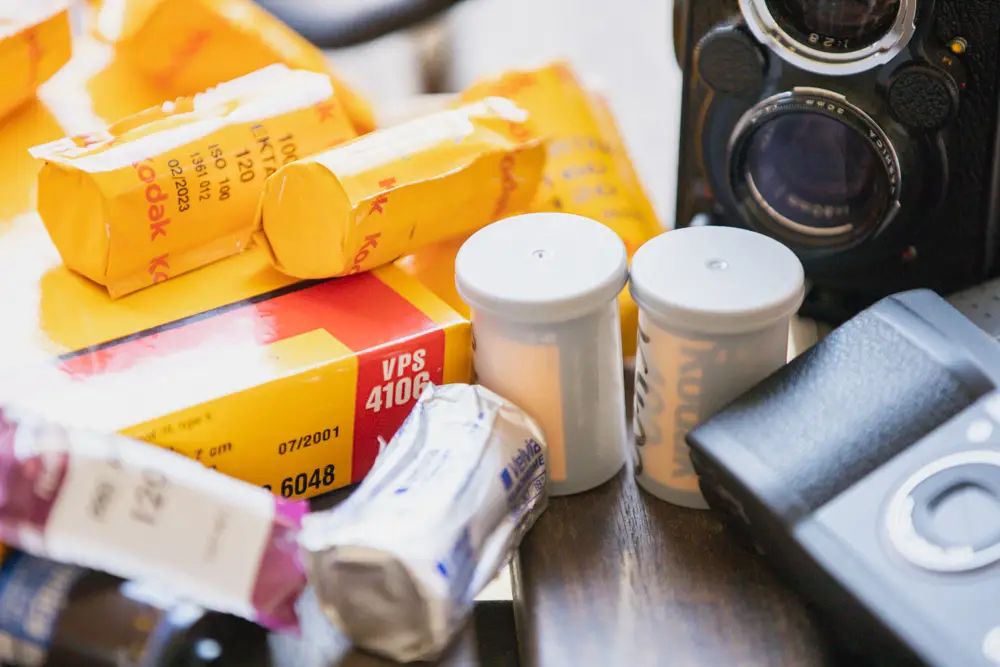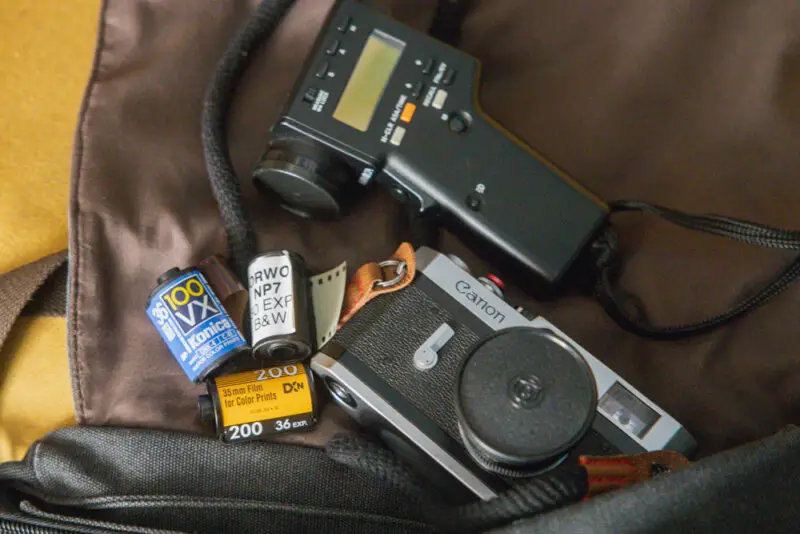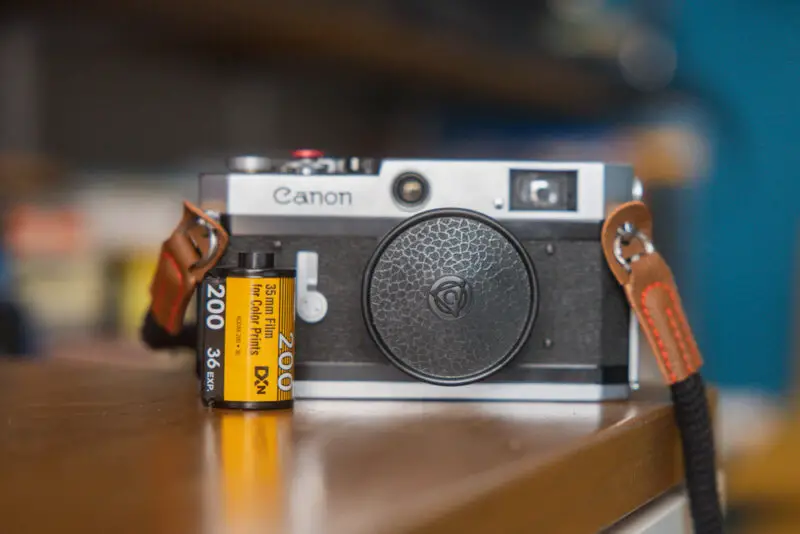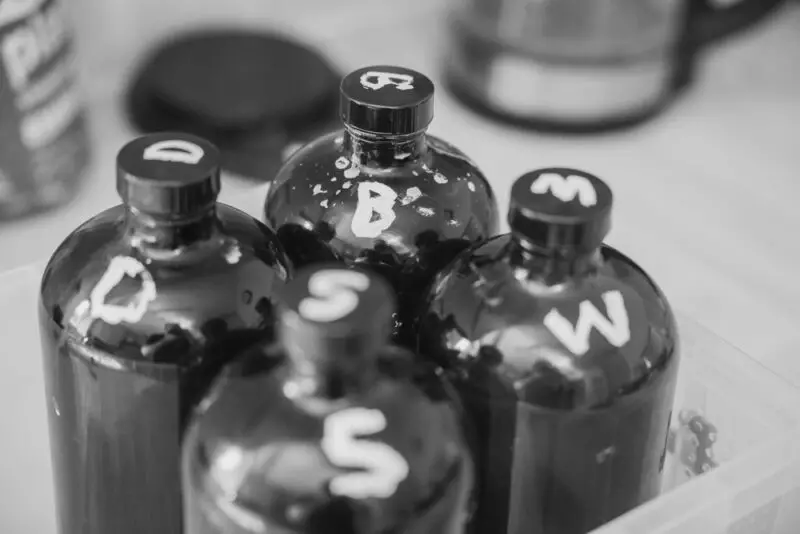Expired film photography can produce unique results. There is never quite a similar roll of expired film, but each one degrades and bends differently. Colors fade as they age. There is something odd about photographic film. A split second of accidental exposure to light can ruin it, and it does not like heat at all.
As it sits on a shelf in a camera store, it slowly deteriorates and loses quality and structure. In the same way that food spoils with age, film deteriorates over time. When you shoot pro-level films, it’s recommended that you shoot and develop them before they expire. This ensures that you retain a uniform look – and quality.
Even after its expiration date has passed, the film remains usable. You can extend the lifespan of some films well beyond their intended expiration date by storing them properly.
Despite its degradation, expired film can still take fantastic pictures despite its slow collapse. Some shots can seem surreal due to color shifts and lack of sharpness. Use expired film if it is still in good condition because an expired film can still be of excellent quality.
Back at the time, dozens of types of film were available in camera stores, such as Kodak Elite Chrome, Royal Gold, Agfa Precisa, Fuji Astia, etc. These films each had their own characteristics, such as color palettes or grain structures.
Almost all of these names are now forgotten as digital has replaced film, and film has declined in popularity.
- A Short Introduction To Film
- Film’s ISO Rating System
- Why You Should Use Expired Film
- Shooting Expired Film Photography
- Conclusion
A Short Introduction To Film
So, what is a film? By definition, the film is an emulsion-coated plastic strip that is used to produce photographs or motion pictures in cameras. In other words, the film is a physical medium used by photographers in film cameras, which has an expiration date. Labeled with the date and EXP on the barrel.
Additionally, the film label includes its ISO, which describes how fast the film is and how light or dark the final images will be. Earlier film cameras recorded light coming through the lens with 35mm, 50mm, medium format, and even color slide films.
If you have shot film, you will know that it needs to be developed in various chemicals. Film emulsion is a chemical process that involves chemical compounds such as silver halides to produce images. You can turn negative films into prints, whether they are color negatives or black-and-white negatives.
Film’s ISO Rating System
As a rating system for film sensitivity, ISO tells you how responsive the film is to light, hence, this is the film speed. When the ISO is set to low (50), the film must be exposed for a longer period of time. If you want to take a picture with a faster ISO speed, less light will be required.
It is similar to digital photography, you just do not have any flexibility with the ISO settings and can not change them as often as you wish. If you use a film camera, the whole roll of the film must be exposed to the same ISO level. If you change the ISO setting part way through, the developed film will have an incorrect exposure.
That is because you can’t change the effective ISO of the film, you are just de-calibrating the light meter in your camera.
A variety of ISO speeds allows you to control the shutter speed and change the aperture settings on your camera (which will affect the depth of field on your view).
Photos tend to look grainy when the ISO is too high in film photography. Many people confuse grain with noise, but they are not the same thing. In comparison with high ISO on digital sensors, how ISO affects the look of the film is different.
So, with a low ISO, you will have less grainy pictures and vice versa. But, grainy pictures look cool in comparison with noisy pictures from digital cameras, so do not fear experimenting with film.
If you are unsure what ISO film you have, check the speed on the box or on the roll itself. ASA films follow the same standard as ISO film, so if you find an old roll of film, you might be able to identify its ASA rating.
Why You Should Use Expired Film
Most rolls of film have a two-year expiration date. Although it isn’t an exact date, it’s more of a guideline. Don’t throw out films too soon because their decline will be gradual.
Despite that, many photographers avoid shooting expired or poorly stored film, other photographers do just that. Those willing to risk image quality and consistency can find shooting expired film an intriguing option, but it can also be highly rewarding. However, you are at risk of losing an image altogether for reasons beyond anyone’s control.
It’s never easy to predict what’s going to come out when shooting an expired film. Perhaps you will even discover your own photography style.
So, the expired film is usually used for two reasons: cost and experimentation. Quite often you can get your hands on expired film for a lower price, or even for free. Is there any reason why you would turn down someone who offers you an expired film? eBay is also a good place to find the expired film at a lower price than new stock.
This is a great film to experiment with, and if it’s not too old and is stored well, it may not differ too much from the fresh film.
Remember – you still need to develop it. Even if you are not happy with the results, you will still have to pay for the development. So, in order to avoid loading up a roll with unnecessary costs, you should weigh your options.
What You Need To Know About Shooting Expired Film Photography
You may have come across an expired film if you shoot a film. But, if you are new to film and you like expired film photography, there are a couple of things you need to know. So with this guide, I will hopefully point you in the right direction. If you have any questions, feel free to post them in the comment section below.
The Key To Success Is Knowledge
Knowing about the different types of film and the various and perhaps defunct photographic processes necessary to create an image is critical before starting to shoot – or buy – old and expired film.
There are basically four different kinds of films available today, as well as three common processes for developing them. C-41 refers to both color negative film and chromogenic black and white film, such as Ilford XP-2. In a standardized process, color reversal (slide) film is developed with the designation E-6.
A wide variety of black and white developers are available without any standardized process for developing them. Despite appearing unspectacular at first glance, the details are what make the difference.
A Good Storage System Is Essential
The chemical ingredients that make up film emulsion react with heat and moisture, and they also degrade over time. As a result of all these factors, the expired film will not produce high-quality images. Both the storage method and age of the film will influence its performance.
The moisture and heat from the sun can even adversely affect the quality of the fresh film, particularly if it is color. The images will look different if the film has been stored somewhere hot and damp for an extended period of time.
Aside from that, you don’t have to store your film in the fridge. Just keep it somewhere cool and dry. If you don’t intend to shoot it for a long time, we recommend storing it in the refrigerator.
A Bracketing Technique For Expired Film Photography
When you bracket an image, you capture it multiple times with different camera settings, resulting in a different exposure for each shot. Photographers and cinematographers bracket their cameras’ aperture, ISO, or shutter speed to achieve varying exposures.
In this case, you are dealing with fixed ISO/ASA because you are using film. Therefore, the only settings you can manipulate to bracket your photos are the shutter speed and aperture.
Unlike digital cameras, when shooting film, you don’t have an instant preview. So, you won’t know whether you did everything right, or you messed up the film roll until you develop it.
What You Need To Know About Exposing Expired Film For Better Expired Film Photography
Over time, silver halides in the emulsion lose their sensitivity. Meaning, that you will need more light to record an image. Therefore, you cannot rely on the box speed as much as you would on fresh film.
It is a general rule of thumb that you should overexpose a film by one stop for each decade it has been out of date. In other words, if you use a 200 ISO film, but it expired in 2010, you should treat it as 100 ISO. However, the quality of the film will vary depending on its condition and storage, as mentioned above.
The aging of the black and white film is a little less severe, so it applies mostly to color negatives.
Film that is slow loses less speed over time, while film that is fast loses more speed over time. The chances of overexposing a 100 ISO film are lower than those of overexposing a 1600 ISO film.
Things You Need To Know About Shooting Expired Color Film
In contrast to reversal film, color negatives tolerate severe overexposure. It is generally better to overexpose in doubt than to underexpose. A correct exposure, however, is the best. Once again, if you have only one roll of a particular film to shoot, good luck and ample light are necessary.
When this occurs, you can follow the “one stop per decade” rule with good conscience. There is also the option to expose one stop less than the total stops per decade and instead push one stop in development, which generally produces better results.
It is more unpredictable to shoot expired color film than expired black and white film. The color emulsion has multiple layers, each of which ages at a different rate. In addition, the color negative film will differ from the color slide film (positive)
As color negatives age, not only will the silver halides lose their sensitivities, but the individual color dye layers (red, blue, and green-sensitive) will age differently as well. The most relevant application of adding one stop for every decade is in color negatives. Keep in mind, however, that this assumes the film was stored under reasonable conditions.
When shooting color slide film, bracketing is definitely better than overexposing the entire roll. Overexposing too much will ruin your highlights, and underexposing will ruin your shadows.
You won’t have as much leeway with the exposures as you do with color negatives, but the film will degrade the same as color negatives. As an alternative to slide film, you can process it in C-41 chemistry as a negative. There is a term for this called cross processing.
Black And White Film – What You Need To Know
Since black and white film is made from different chemicals, it lasts longer and doesn’t age as much as color film.
Shooting expired black and white film is a better option for expired film photography. The opportunity to shoot rare old black and white films is great when you use expired film. Black and white film is much more stable since only silver halides are present in the emulsion and no color dyes are added.
The neg will fog over time, which reduces the contrast and gives you a denser neg. Generally, you can shoot black and white film at box speed if it is at least 10 years old. The older it is, the more exposure you will need or the more time you will need to develop it. Films that are older will have more noticeable grain.
In other words, don’t be afraid to pick up some old black and white films if you’d like to experience some of the beauty they offer since they’re easier to use than other expired films.
Key To Success With Black And White Films
Choosing the right developer is key to success with black and white films. The use of Rodinal diluted to 1+100 or higher is often recommended for stand development, however, lack of agitation during processing may lead to bromide streaking and uneven development.
It seems most feasible and effective to use another approach in most cases. It is best to develop standard films at a slightly higher temperature for a shorter period of time. This is especially true with developers such as HC-110, which use a potent restrainer, or anti-fog agents such as 1% Benzotriazole mixed into the developer.
Short processing in HC-110 dilution B (1+31) at 23°C/73F for no more than 7 minutes is recommended, especially for older black and white films. With this strategy, potential base fog is prevented from building up gradually, and development is active enough to compensate for any minor speed loss caused by the higher temperature.
Try out the film with exposure brackets under various conditions if you have more than one roll, perhaps a whole brick or more. By predicting how the film will behave, you will not only decrease the risk of failure and subsequent image loss but also gain a better understanding of how you should use it.
An Easy Way To Tell If A Film Has Expired
You should check the film box or individual film wrapper for the “Use Before” expiration, or production date to determine if it is expired. The only way to find out whether the film was in proper storage, or whether it is past the expiration date is to actually shoot it.
It is typical for most cameras to use film that has a shelf life of 2-3 years after manufacturing, so most companies will list a 2-year expiration date on the roll. You shouldn’t use instant film more than one year after the date of expiration.
You can still utilize and process an expired film roll, but the manufacturer cannot guarantee consistent results.
Before You Shoot, Use One Roll As A Test
If you’re using expired film, make sure you test it first. Before doing any real shooting, test out one of the expired films you bought in a bundle pack.
It’s a good idea to take a roll out for a test before the big day if there’s something specific you want to capture. You may want to do this if you have many similar rolls in the bundle.
You can determine the effects of a degraded film by using a test roll. But, it is important to know that you will never get two rolls that are exactly alike. The best part is that you’ll get unique photos with each set!
Increase Light By Using Pull Processing For Better Expired Film Photography
You can trick the camera into thinking it’s using a film with a lower ISO when the film’s sensitivity declines. Pull processing is a type of sensitivity compensation. It is possible to push process an expired fill roll, but you will need more light.
There is a general rule of thumb to follow when adjusting the ISO in this manner. Whenever a decade has passed since the expiry date, lower the ISO by one stop. You should drop a ten-year-old 400 ISO film down to 200 ISO.
You can use this tip to your advantage for expired film photography. Unfortunately, there aren’t many older film cameras with ISO settings below 100. The process isn’t exact, and therefore, you should experiment and test as much as possible. Using the same camera is also a good idea. You may get different results if you use a different camera.
Several Advantages To Using Expired Film
Depending on the photographer, the expired film might be convenient, cost-effective, or creatively beneficial. Here are some advantages to consider:
You can save a lot of money – Both the purchase and processing of film can be expensive. The cost may still be worth taking a chance on if it is cheaper.
It is easy to find – Especially in large quantities, specific film types can be hard to find. Many locations sell expired films, including in-store sales, online retailers, dollar stores, and other outlets.
You can use it to bolster your creativity – An old film produces images with more grain, a greater range of colors, and greater contrast than a new film. If you develop a film past its expiration date, you might be in for some surprises. That is especially true if you don’t know how it was handled or stored.
Some photographers enjoy this unpredictability, embracing uncertainty as part of their artistic process.
Disadvantages to Using Expired Film
If you use an expired film you will find a number of disadvantages. Mainly due to the fact that you can’t be sure of the conditions the film has been in, and how long it has expired. A non-expired film exposed to heat or moisture may outperform an expired film kept in optimal conditions.
Usually, storage conditions affect color film more than black-and-white one. That in turn affects your photographic results. Depending on how you process expired film, fogging can appear across the image. Black-and-white negative film is less prone to fogging than color negative film.
Don’t Be Afraid To Accept Unexpected Results In Expired Film Photography
Keep in mind that you can further manipulate expired film in the development process, so keep an open mind when shooting with expired film.
Cross processing, in which you use the incorrect chemicals to alter color or contrast, can produce something quite artistic if you mix expired film with it.
Light Is Important For Capturing Details
A film’s sensitivity to light decreases as its emulsion deteriorates. As a result, you’ll require more light than you think. Shooting outdoors in broad daylight is the easiest way to solve this problem. It won’t matter if it’s sunny or cloudy because there will be plenty of light.
In environments with good lighting, you can treat the film as if it were a normal one. The quality will remain high even with a little more grain. So, when there is a shortage of light, problems arise. A dark environment, or a large contrast area, will cause problems, a loss in detail and vitality, as well as more grain.
When natural light isn’t abundant, you can use a flash. This technique, however, will produce grainier images, which may be amazing for expired film photography.
Does Expired Film Develop?
Expired film photographs have faded colors that skew towards magenta when developed, but that is the beauty of expired film. You can use applications like Photoshop or the photo editing software that came with your computer, you can restore the images to life.
There is no difference between developing expired films and developing non-expired films. Several factors determine the usability of the images. Such as:
- Storage conditions of the film.
- How long it has expired.
- Exposure method.
Test It Out, Experiment
Experimenting with old and expired films can be a lot of fun if you’re willing to take the risk of less than ideal results. After the best before date has passed, don’t be surprised if the expired film doesn’t behave as expected.
It goes without saying that you should always use fresh film stock if you can. You can concentrate on your images because it’s consistent and reliable. Buying fresh film ensures that manufacturers will continue to produce more. It is the goal we all aim for in expired film photography.
Conclusion
When it comes to expired films, the most important thing to keep in mind is that you never know what you’re going to get. When buying film that has only recently expired, you can use it as if it were new. In this way, you can purchase the film at a lower cost.
However, saving money isn’t the only benefit. When experimenting with expired film, you can get some excellent results.
The use of expired film carries an element of risk. It is impossible to know how degraded a roll of film is before you use it, so the results may not be as you expect. You would only get splotches and grain if the film was too old.
Don’t assume things will always turn out well. You can expect them to be mediocre (or worse) sometimes, but most of the time they will. You may even come across something really interesting or artistic once in a while.
But, never rush the testing of the films. Take your time, and try out different compensation techniques on your camera. Except for the unexpected, sometimes, the results are pure magic.
We’d love to hear what you have to say in the comments!




